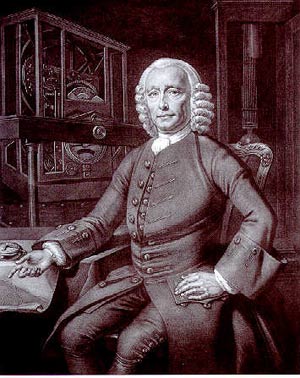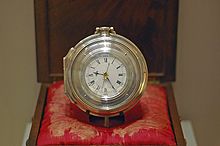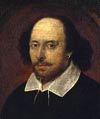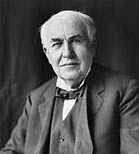John Harrison (24 March 1693 – 24 March 1776) was a carpenter and watch-maker. He invented the marine Chronometer which enabled a ship to accurately know its longitude at sea (position on east-west access) His invention was critical in the development of long-distance seafaring, which was very important in the eighteenth century.
Short Bio John Harrison

Harrison combined his skills of being a carpenter with making new clocks. Later clocks also added extra features, such as the grasshopper escapement to improve the quality of clocks. The grasshopper escapement provided a controlled and step by step process for releasing the energy of the clock. His pendulum clocks are considered to be some of the most accurate clocks of the age.
Although a good inventor, he was less skilled at dealing with people, Harrison was helped by George Graham and Edmond Halley, who helped finance, encourage and advocate on behalf of Harrison.
His most important invention was finding a solution to the issue of longitude. For a long time, the ability to know a ship’s longitude position had not been found. Numerous attempts had been made, but none successful. The ability to know longitude was essential to the safe navigation of ships. The problem was considered so important, Parliament offered a £20,000 reward for the first person who could provide a solution. Sir Isaac Newton himself had doubted whether such a device could be created.
Harrison’s invention was to develop a clock able to tolerate fluctuations in temperature and air pressure and could keep very exact time for a long time. It took Harrison five years to develop his first sea clock (H1). It incorporated roller pinions, wooden wheels and two dumbbell balances linked together. After receiving approval of Royal Society, it was given its first sea trial on a route to Portugal. The tests proved very favourable, with Harrison’s clock accurately predicting longitude (compared to the old methods which were 60 miles out.) However, this was not enough for the Parliamentary prize which required use on transatlantic routes.
Over the next few years, he built different versions, improving on the design. Changing bar balances to circular balances (not affected by the rolling action of the sea). His next models, H2 and H3 were never entirely successful, and around 1750 Harrison abandoned his Sea Clock and started working on a smaller sea watch.
Incorporating elements of other watches, built by Thomas Judge, Harrison worked on a Marine watch (H4). Although taking another six years to build, Harrison was able to prove successfully that by using this watch Longitude could be accurately measured. On the first trial to Jamaica, the Marine Watch proved very accurate. However, the Parliament board kept back the prize, arguing that it might have been 
Harrison’s life work had been completed after years of hard work on improving the design. It was soon widely used. For example, fellow Yorkshireman Captain James Cook used a copy of H4 on his second and third journeys. Despite their high cost, they proved very useful for safer navigation.
Harrison died at the ripe age of 83 and he was buried in Hampstead. Harrison’s device was later improved upon by John Arnold, who enabled the production of cheaper Chronometer’s – enabling their widespread use in shipping.
Today the restored H1, H2, H3, and H4 can be on display at the National Maritime Museum in Greenwich.
Citation: Pettinger, Tejvan. “Biography of John Harrison“, Oxford, UK – www.biographyonline.net. Published 12th Jan. 2014. Last updated 16 February 2018.
Related pages
Famous 


